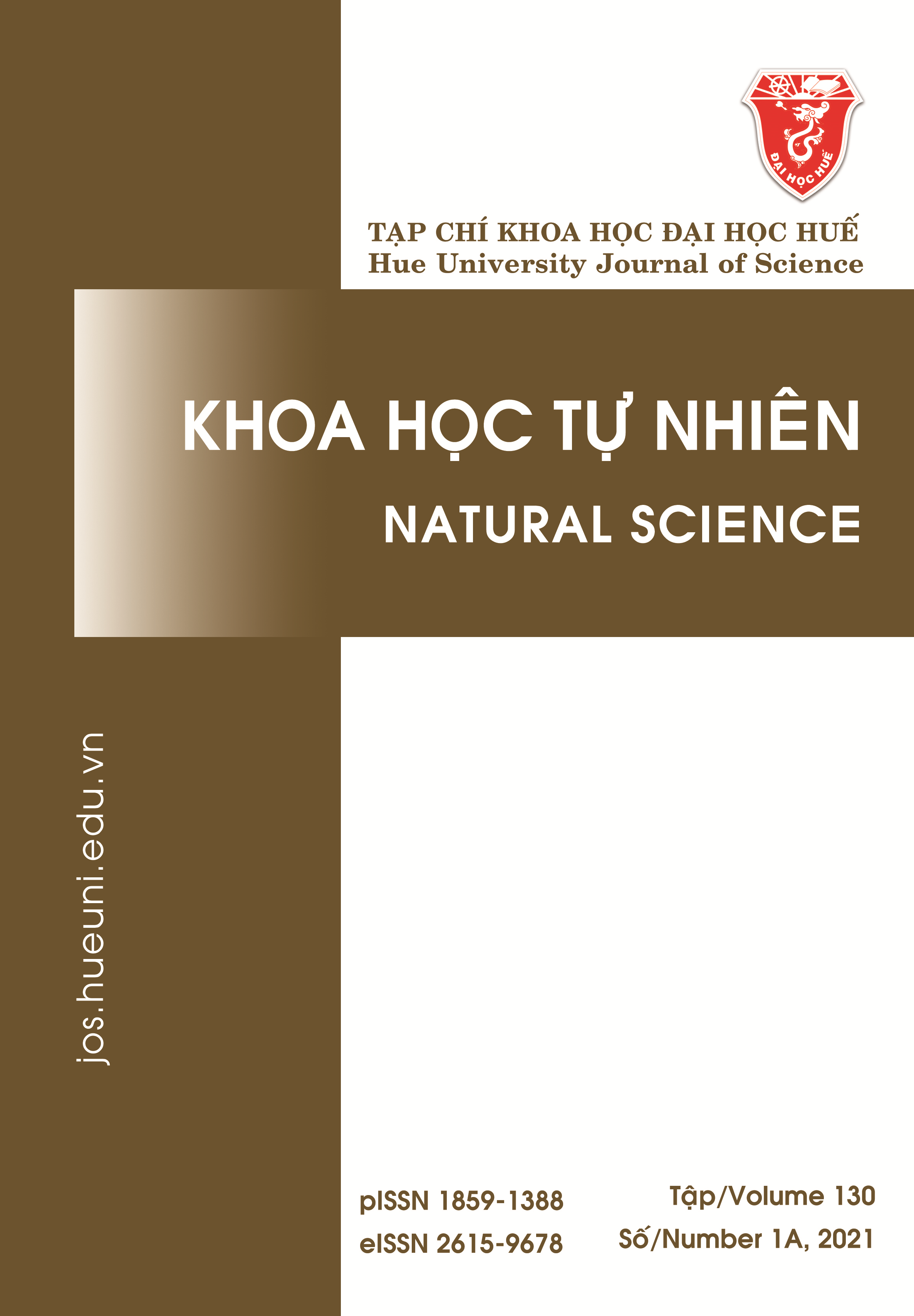Tóm tắt
Nghiên cứu này được thực hiện nhằm tìm hiểu khả năng hình thành biofloc để duy trì sự ổn định của môi trường nước trong hệ thống ương giống tôm thẻ chân trắng. Một tổ hợp vi sinh phát triển từ nguồn nước tự nhiên được sử dụng để so sánh với đối chứng có bổ sung chế phẩm vi sinh công nghiệp. Tôm được nuôi trong điều kiện hạn chế ánh sáng mặt trời trong 24 ngày, không có sự trao đổi nước và có bổ sung rỉ mật hàng ngày để làm nguồn carbon (tỷ lệ C/N ở mức 15:1). Tổ hợp biofloc hình thành đã kiểm soát lượng NH4+ và NO2– bằng quá trình đồng hóa dị dưỡng và nitrate hóa. Trong suốt quá trình thí nghiệm, hàm lượng N–NH4 và N–NO2 của hệ thống biofloc được duy trì ở mức an toàn đối với tôm con, lần lượt là 0,99 ± 0,02 mg·L–1 và 0,49 ± 0,08 mg·L–1. Ở mật độ nuôi 400 con·m–3, khối lượng tôm tăng từ 0,01 đến 0,59 g·con–1 sau 24 ngày nuôi ở tất cả các bể với tỷ lệ sống đạt 82,5%.
Tài liệu tham khảo
- De Schryver P, Crab R, Defoirdt T, Boon N, Verstraete W. The basics of bio-flocs technology: The added value for aquaculture. Aquaculture. 2008;277(3-4):125-137. DOI: https://doi.org/10.1016/j.aquaculture.2008.02.019
- Crab R, Defoirdt T, Bossier P, Verstraete W. Biofloc technology in aquaculture: Beneficial effects and future challenges. Aquaculture. 2012;356-357:351-356. DOI: https://doi.org/10.1016/j.aquaculture.2012.04.046
- Avnimelech Y, Weber B, Hepher B, Milstein A, Zorn M. Studies in circulated fish ponds: organic matter recycling and nitrogen transformation. Aquaculture Research. 1986;17(4):231-242. DOI: https://doi.org/10.1111/j.1365-2109.1986.tb00109.x
- Avnimelech Y. Carbon/nitrogen ratio as a control element in aquacultures systems. Aquaculture. 1999;176:227-235.
- Hargreaves JA. Photosynthetic suspended-growth systems in aquaculture. Aquacultural Engineering. 2006;34(3):344-363. DOI: https://doi.org/10.1016/j.aquaeng.2005.08.009
- Crab R, Avnimelech Y, Defoirdt T, Bossier P, Verstraete W. Nitrogen removal techniques in aquaculture for a sustainable production. Aquaculture. 2007;270(1-4):1-14.
- Burford MA, Thompson PJ, McIntosh RP, Bauman RH, Pearson DC. Nutrient and microbial dynamics in high-intensity, zero-exchange shrimp ponds in Belize. Aquaculture. 2003;219(1-4):393-411. DOI: https://doi.org/10.1016/s0044-8486(02)00575-6
- Zhao P, Huang J, Wang X, Song X, Yang C, Zhang X, et al. The application of bioflocs technology in high‐intensive, zero exchange farming systems of Marsupenaeus japonicus. Aquaculture. 2012;354-355:97-106. DOI: https://doi.org/10.1016/j.aquaculture.2012.03.034
- Xu W, Morris TC, Samocha TM. Effects of C/N on biofloc development, water quality and performance of Litopenaeus vannamei juveniles in a biofloc-based, high-density, zezo exchange, outdoor tank system. Aquaculture. 2016;453:169-175. DOI: https://doi.org/10.1016/j.aquaculture.2015.11.021
- Pérez-Fuentes JA, Hernández-Vergara MP, Pérez-Rostro CI, Fogel I. C:N ratios affect nitrogen and production of Nile tilapia Oreochromis niloticus raised in a biofloc system under high density cultivation. Aquaculture. 2016;452:247-251. DOI: https://doi.org/10.1016/j.aquaculture.2015.11.010
- Việt LQ. Ứng dụng biofloc nuôi tôm thẻ chân trắng (Litopenaeus vannamei) với mật độ khác nhau kết hợp với cá rô phi (Oreochromis niloticus). Tạp chí khoa học Trường Đại học Cần Thơ, Phần B: Nông nghiệp, Thủy sản và Công nghệ sinh học. 2015;38:44-52.
- Hiền NTT, Huấn NV. Nghiên cứu ứng dụng công nghệ Biofloc trong nuôi thâm canh tôm thẻ chân trắng Penaeus (Litopenaeus vannamei) quy mô sản xuất. Bản tin viện nghiên cứu nuôi trồng thủy sản. 2013;13-15.
- Phương TV. Nghiên cứu nuôi tôm thẻ chân trắng theo quy trình biofloc với mật độ và độ mặn khác nhau. Tạp chí khoa học Trường Đại học Cần Thơ, Số chuyên đề: Thủy sản. 2014;2:44-53.
- Nhung VTN. Nghiên cứu một số nguồn Carbonhydrate tạo biofloc để nuôi tôm thẻ chân trắng (Litopenaeus vannamei). Tạp chí khoa học Trường Đại học sư phạm thành phố Hồ Chí Minh. 2017;14:149 -160.
- Rice EW, Baird RB, Eaton AD. Standard methods for the examination of water and wastewater. 23rd Edition. Washington, DC (US): American Public Health Association (APHA); 2017. 1796 p.
- Azim M, Little D. The biofloc (BFT) indoor tanks: Water quality, biofloc composition and growth and welfare of Nile tilapia (Oreochromis niloticus). Aquaculture. 2008;283(1-4):29-35. DOI: https://doi.org/10.1016/j.aquaculture.2008.06.036
- Azim M, Little D, Bron J. Microbial protein production in activated suspension tanks manipulating C:N ratio in feed and the implications for fish culture. Bioresource Technology. 2008;99(9):3590-3599. DOI: https://doi.org/10.1016/j.biortech.2007.07.063
- Da Silva KR, Wasielesky W, Abreu PC. Nitrogen and phosphorus dynamic in the biofloc production of the Pacific White Shirmp, Litopenaeus vannamei. Journal of the World Aquaculture Society. 2013;44(1):30-41. DOI: https://doi.org/10.1111/jwas.12009
- Burford MA, Thompson PJ, McIntosh RP, Bauman RH, Pearson DC. The contribution of flocculated material to shirmp (Litopenaeus vannamei) nutrition in a high-intensity zero-exchange system. Aquaculture. 2004;232(1-4):525-537. DOI: https://doi.org/10.1016/s0044-8486(03)00541-6
- Avnimelech Y. Feeding with microbial flocs by tilapia in minimal discharge bio-flocs technology ponds. Aquaculture. 2007;264(1-4):140-147. DOI: https://doi.org/10.1016/j.aquaculture.2006.11.025
- Chen J, Chin T. Accute oxicty of nitritee to tiger prawn, Penaeus monodon, larvae. Aquaculture. 1988;69(3-4):253-262. DOI: https://doi.org/10.1016/0044-8486(88)90333-x

công trình này được cấp phép theo Creative Commons Ghi công-Chia sẻ tương tự 4.0 License International .
Bản quyền (c) 2021 Array




